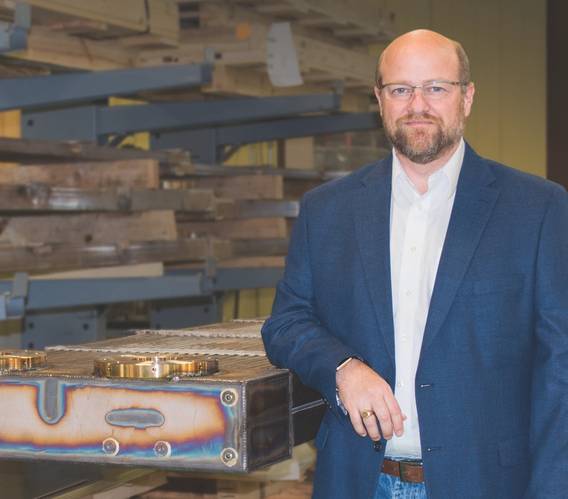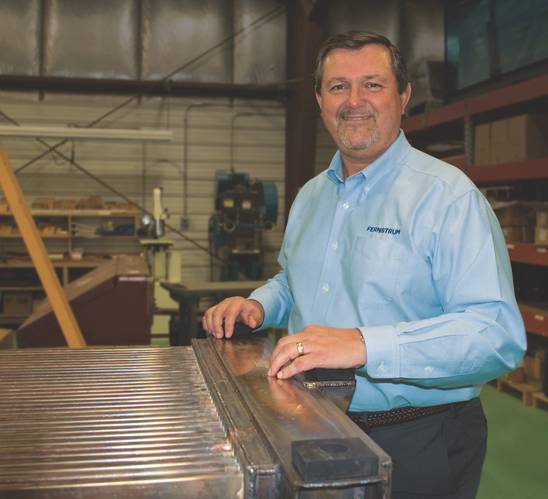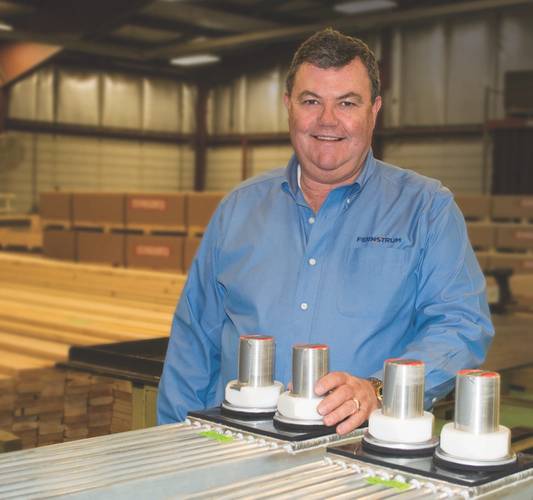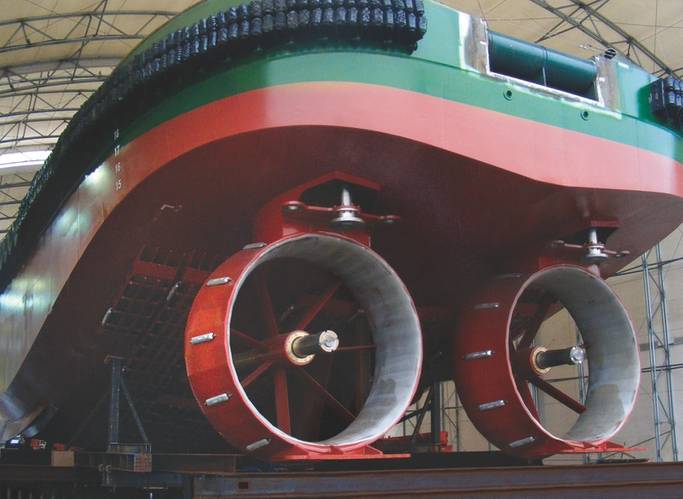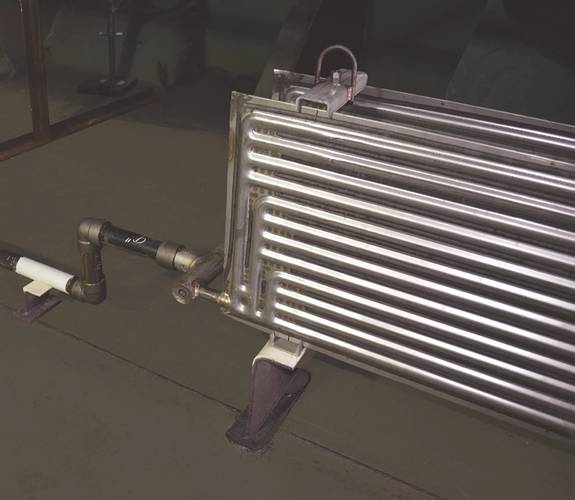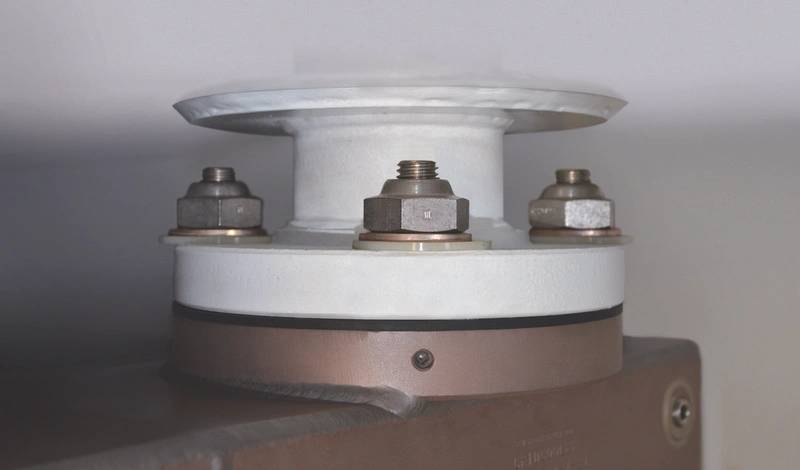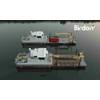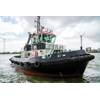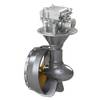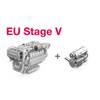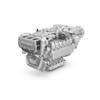Founded by Robert W. Fernstrum 67 years ago, R.W. Fernstrum & Company is currently run by its third generation of Fernstrum. This long-tenured maritime staple has seen its fair share of maritime cycles, and in today’s challenging market it is not standing still. The company is digging for, and finding, business in all four corners of the world, above water and below, as Sean Fernstrum, President & owner, and his team explain.
“Diversify, diversify, diversify … always,” is the way that Sean Fernstrum neatly summarizes the challenge of running an efficient business to and through the many up and down cycles common in the maritime market. “You have to be in different markets. You try to ride an even line (with diversification). We rode the oil wave for a number of years, but you always have to have other pieces in place for when a market drops off.”
Despite the paucity of new business in the oil and gas sector, there are always emerging and niche markets, such as the tidal power generation market, that hold strong potential. “You’ve got to be opportunistic and able to jump on it when it presents itself,” said Sean. “Don’t be overly concerned on where that opportunity is located; there’s always a way to get that done.”
Looking Back
Understanding a company’s history, particularly when it is a tightly held family run company, is often a good window into its future. In the case of R.W. Fernstrum that would entail engineering acumen and a dogged pursuit of new opportunities.
“My grandfather Robert Fernstrum started the business in 1949 when he moved back to his home town of Menominee, Mich., and started selling Gridcooler Keel Coolers,” said Sean. “The origins of our product lines have been a foundation for our success. The Gridcooler Keel Cooler was developed to solve a cooling problem for landing craft during WWII. My grandfather was the chief engineer at Gray Marine and Continental Motors during the war. Gray Marine built landing craft and needed to devise a compact closed-circuit cooling system to meet the needs of a wide range of operating conditions. Existing cooling systems were far too large for landing craft, so Robert developed a solution on his own. His compact keel cooler was the prototype for what would become our Gridcooler Keel Cooler line.”
More than 60 years later, Sean understands that both his business and the maritime business have changed dramatically. “The business has changed with the markets shifting, and it’s a matter of us changing gears and getting ready for that next high (cycle),” said Sean.
Central to its future is continued investment in the company. According to Sean Fernstrum, investment in the business is the umbrella for what he sees as four big areas of continual investment: facilities, equipment, products and people, “but not necessarily in that order,” he adds. “This has been our strategy for years. The investment in facilities and equipment are obvious, the investment in product and people perhaps not so obvious.” A tour of the Fernstrum facilities in Menominee, Mich., and Sean’s words bear true, as the company has recently expanded its headquarters with modern front office facilities, and the main workshop includes a number of new machines to keep manufacturing efficient.
This investment has manifested itself also in a broadening of the traditional Gridcooler Keel Cooler line to include, among others, the Weka Boxcooler, which was a development of Cees de Kwant in the Netherlands, as well as Tranter’s line of heat exchangers that go back to Ransom Olds and his development of chilled plates used in milk wagons 100 years ago. Today those plates are providing efficient heating of cargo in applications like petroleum and sulfur barges. “Platecoil is proving to be an efficient, cost effective heating solution for barges and bulk cargo vessels,” said Sean Fernstrum. According to R.W. Fernstrums domestic sales lead Frank Bjorkman, the ATB market is particularly interesting for the company, for example, as it may have a grid or box cooler on the boat, and the Tranter Plate Coil application for heating the heavy oil in the cargo holds of the barge unit gives his company the opportunity to offer a complete package. “We don’t manufacture (the Tranter unit) here, but we do engineer and sell it,” said Bjorkman. “Typically those tankers have a lot of two-inch serpentine pipe, and the cost of putting a Tranter plate coil unit is a huge savings.”
With the additional products, Bjorkman said “we find ourselves getting more into cooling solutions where we’re providing multiple solutions. It has opened up many opportunities.”
Serving Markets Globally
When it comes to serving global markets, Sean Fernstrum is first to admit that his company and its 36 employees are not centrally located in Menominee, Mich. He stresses the importance of travel, long-standing relationships and the creation and maintenance of a solid network of dealers and distributors as essential to global success.
In this spirit, every few years Fernstrum invites its world of representatives to Michigan for ‘Rep Days,’ Bjorkman said, which entails several days of meetings, time in the shop and social functions so that manufacturer and representatives are on the same page. Ample time is provided also for the representatives to network, as Fernstrum believes that a stronger bond between these organizations goes a long way in creating resolutions if and when a conflict of territory may arise. Visiting the company in Menominee makes RW Fernstrum’s global push all the more impressive, particularly when looking at the roster of business in hand, as Dale Gusick, head of international sales, summarizes:
- There are a number of interesting wave and tidal energy projects, with Fernstrum involved with four separate trials in four countries. “Some of these have been out for 2.5 to 3 years, and we’re starting to get to the point where they are discussing production runs,” said Gusick. Fernstrum’s role is to keep all of the subsea power generation and computing components cool.
- In South America the inland waterway market remains vibrant. “The market is not as strong as it was five years ago, but the big players continue with activitiy,” said Gusick. In particular, he sses the major players using this lull to position themselves for the inevitable rebound. The big operators are starting to open more terminals on the rivers, terminals for moving soy and corn. “Every terminal they set up is going to require push boats, it’s going to require barge fleets,” Busick said.
- RW Fernstrum is also seeing a “nice run of small tugboats coming out of Indonesia and Malaysia” Gusick said, as well as a number of small boats and landing craft used as ferries coming out of Bangladesh
- Closer to home, while Bjorkman said offshore is obviously down, North America holds opportunity, including push boats for inland market, tug business, ferry business, including the series of ferries building for the City of New York at Horizon Shipbuilding and Metal Shark, as well as the aforementioned Alternative Energy Systems.
A Tier Change
The biggest driver for its business is not region, rather regulation. According to Sean Fernstrum, the continued move toward emissions reduction across the maritime world has put engine cooling solutions front and center, as cooling is essential in the process to pull out particulate matter and help cut back on greenhouse gasses. “For us,we are seeing less water but we have to reject more heat … a real double whammy.”
When comparing comparable engines built in the 1990s versus today, that ‘same’ engine will require significantly more heat exchange, essentially resulting in bigger cooling units. “This is an area of change for use where we are investing in the product to innovate so that we are still cost effective,” said Sean Fernstrum. As the coolers are getting larger, one option is to stack them. “Whereas 20 years ago we did a few ‘stacked’ units per year, today it seems like every order is going to the stack tube to get them to fit on the vessel,” said Gusick. Whether the cooling challenge is WWII landing craft or an EPA Tier 4 engine, Sean Fernstrum keeps his company focused on the mission at hand: “Our strength is heat exchange. “Whether it’s cooling or heating, it is heat exchange. That’s our core strength. We’re serving that with a number of different product lines now, and we can bring those together and provide a packaged solution.”
• 








